Spencer, Scott B. “Soundscapes and Representation in the Mashantucket Pequot Museum and Research Center.” Explorations in Media Ecology. 6:4 (2007): 17-29.
A Primary Attempt at Theoretic Placement:
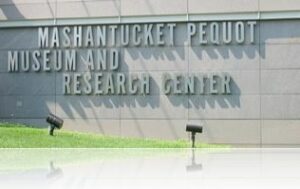
The fields of Musicology, Ethnomusicology and Media Ecology have approached concepts of audio in a sensorium through studies of experienced sound. Media Ecologists have long been open to investigating the full range of perceived sound (and even imagined sound) with a focus on the spoken word – modernist conceptions of oral traditions and postmodernist instances of electronically mediated spoken text. The field of Musicology has only recently opened its definitions of music beyond that which is sonically manifested from the printed score, to include all musical activities experienced both in performance settings as well as in everyday life. In fact, Musicologists have in the past half century had to expand their conception of music to incorporate virtually all organized sound, in part due to the performative experimentations by the avant-garde movement, though the field still places the use of text in a secondary status.
In the early 20th century, those who wrote on ideas of non-textual meaning in music defined music as a structured harmonic art form with limited and rationally contextualized dissonance. Performers within the Western art music avant-garde scene of the mid-twentieth century expanded the concept of music to include in their creations extramusical sound, or worldly sounds - also dubbed "noise." Fundamental modernist assumptions about music engaged the idea that classical compositions carried "deep musical structures" with inherent meaning, and the incorporation of signifying or recognizable worldly sounds into music would act to deviate attention from, or stand in contrast to those deeper meanings.
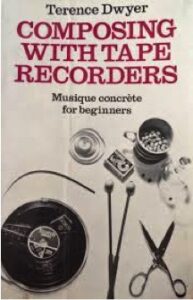
The composers and performers of the avant-garde rationalized their use of noise, as they thought that by incorporating it in their music, noise would become music, and would be an inherent aspect of these deeper structures. Avant-garde composers justified their use of noise-as-music in part because of their mechanical or contextual manipulation of the sounds before their incorporation. The composers thought that by so manipulating the worldly sounds, they were expanding the realm of the musical. As Douglas Kahn has written, the avant-garde presumed, in a typically convoluted thought process,
"that the nature of music was sonic, thereby the importation of worldly sounds into music meant diminishing or eradicating sounds that were too significant. Most important, this process displaced significance to music itself, such that the most common way to make noise significant was to make it music, but by doing so, the significance of sounds was rendered insignificant." (70).
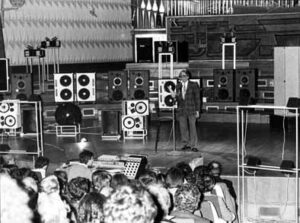
The musique concrète movement pushed the noise envelope further, as composers began recording industrial and mechanical sounds/noises onto magnetic audio tape and aesthetically splicing these sounds/noises together to form distinct works of art. At the same time, dialogues within audiophile circles (especially in the language of advertisements for phonograph and reel to reel machines) pushed for a lack of residual mechanical noise in both recording and playback - a quest for "audio transparency." These are opposing but perfectly intertwined dialogues over extramusicality, each of which demonstrate a conscious and textual dialogue on the role of extra-musical sound in the perception and understanding of an intentional audio environment.
It is obvious to state that intentional technological presentations of extramusical sound (noise, worldly sound, or those sounds traditionally considered outside the realm of music) are heard by human ears, and are included in our sonic experience. Whether or not they convey “deeper meanings” seems to be irrelevant, as all sounds – both musical and extramusical - are processed by the brain, are used as we build our auditory experience, and convey information that is subject to contextualization and mediation. It is difficult to divorce musical and extramusical sound in an experience, as each are a vital part of our sensorial experience and should be considered when evaluating sonic experience. With this in mind, and with the weighting of the musical over the extramusical in academic writings, it seems necessary to investigate the role of the extramusical in the conveyance of information within the sensorium.
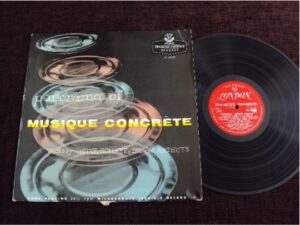
Possibly the most fascinating public arena in which to explore extramusical sound as a conveyor of information within the sensorium would be postmodernist incarnations of the classic museum display. In the fast few decades, museums have shifted their focus from the simple display of ethnographic objects to that of multimedia ethnographic spectacle. Because of the widespread integration of multi-speakered home theatre systems, portable digital sound devices and cacophonous computer games into our own private worlds, museum goers now expect a great deal from an institution's multi-media presentations.
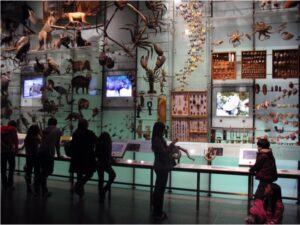
With the digital revolution in sound and recent developments in dynamic computer-based media presentation technology, museums are increasingly integrating complex audio and visual arrays into otherwise static displays, making the interface between display and viewer much more pliable and entertaining. Gone are the days of the scratchy and endlessly-repeated tape loop of bird calls. The result of these developments in audio presentation technology is the placement of sound in a profound position of authority within a museum attendee's ecology of media. Robert Albrecht has written that:
"Particular technologies rearrange or rebalance the sensorium by favoring or appealing to particular sense organs and modalities of knowing. In the case of music, it is quite obvious that the music mediated in an intimate and interpersonal setting is of a different nature than that which is communicated across the channels of mass media…It is the existing technology therefore, that determines the sense ratios and therefore the quality of the experience." (Albrecht 57)
New, dynamic, and ever-changing sound displays present the viewer with surprising and fresh stimuli, and challenge the viewer to change perspective from the classic static museum display experience to a dynamic experience.
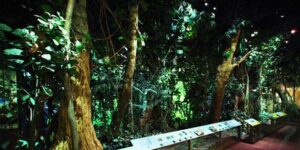
Even with this new technology, which has afforded museum designers a new sonic flexibility, most museums have continued to function in much the same way as they have for centuries: using objects in their displays to guide viewers toward an overarching philosophical ideal or goal. This idea of the museum functioning as a mouthpiece for an agenda is not new. In fact, it has been discussed and theorized by a wide variety of academic disciplines - from the early days of European ethnographic museums, through modernist criticism, and on into the recent postmodernist developments in museum architecture, presentation, function, and especially discussions surrounding their use.
Neil Postman has argued that museums are inherently political:
"A museum is, in a fundamental sense, a political institution. For its answers to the question, "What does it mean to be a human being?" must be given within the context of a specific moment in history and must inevitably be addressed to living people who, as always, are struggling with the problems of moral, psychological, and social survival. I am not urging that museums be used as instruments of cheap and blatant propaganda; I am saying that a museum is an instrument of survival and sanity. A museum, after all, tells a story. And like the oral and written literature of any culture, its so try may serve to awaken the better angels of our nature or to stimulate what is fiendish. A museum can serve to clarify our situation or obfuscate it, to tell us what we need to know or what is useless." (Postman, 165)
The role of sound in a museum’s story, however, has been largely absent from discussions of museum narrative. With the stunning and powerful impact of the recently designed audio aspects of displays in museums such as the Smithsonian Institution's Holocaust Museum, New York City's Museum of Natural History, and the Ellis Island Immigration Museum, the role of sound in museums, and the messages communicated within their displays are is becoming too widespread to be ignored.
One of the most interesting and innovative displays to use as a vehicle through which to discuss the role of sound in museum narrative is that of the Mashantucket Pequot Museum and Research Center in Mashantucket, Connecticut. In this forward-thinking, tribally-owned museum, the featured display attempts to recreate a natural sonic environment through new audio technology.

The Mashantucket Pequot Museum and Research Center is located on tribal land in northern Connecticut, within a mile of the hugely successful, tribally owned Foxwoods casino. The museum is remarkable in two fundamental ways; it the largest tribally owned and operated museum in the United States, and it is located within sight of Foxwoods - the largest tribal gaming establishment in the world. The museum's $193.4 million construction price tag was paid for almost exclusively by proceeds from the casino (MPMRC-GFS).
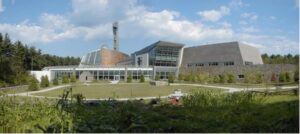
There are, of course, politics surrounding the casino and the museum, including contested reservation land rights, accusations that the museum acts solely to justify tribal presence, and cries of “Pequot-centricism” in a museum that claims to represent all North American Native Peoples.
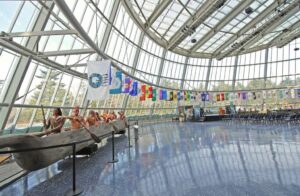
The museum opened in 1998 to critical acclaim, eliciting responses such as "A world-class center for archaeological research into Native American culture and history" and "an outstanding achievement in museum presentation and public education" (MPMRC-GFS). The museum's press releases promote it as an institution with cutting-edge technology and a major center for tribal research and resources:
"The Mashantucket Pequot Museum and Research Center, a new state-of-the-art, tribally owned-and-operated complex, brings to life the story of the Mashantucket Pequot Tribal Nation, and serves as a major resource on the history of the Tribe, the histories and cultures of other tribes, and the region's natural history. Utilizing the latest in exhibit design and technology and based on years of discussion with Tribal members and scholarly research, the institution . . . presents multi-sensory dioramas and exhibits of eastern woodland and Mashantucket Pequot life. The 308,000-square-foot complex, whose research facility will serve as a major resource for scholars and the general public on American and Canadian Native histories and cultures, is one of the most innovative and comprehensive centers of its kind in the United States." (MPMRC-GFS)
The design of the museum takes visitors on an extravagant journey through the natural history of the Eastern seaboard; beginning in prehistory, and progressing through the Ice Age, European contact, and up to the present day. The facility is lavish, with no expense spared, featuring numerous dioramas and recreations, two movie theaters, a library, a natural history garden, an observation tower, and a full restaurant and gift shop.
The most elaborate display in the museum is a walk-through recreation of part of a pre-European-contact Pequot village. The village is not a direct recreation, but is an amalgamation of assumptions based on archaeological, comparative and oral historic knowledge. Described in the press release as a "high-tech 22,000-square-foot 'immersion environment' diorama," it includes fifteen structures in a historic outdoor setting, replete with fifty-one wax figures of Pequots at work on canoes, cooking, repairing houses, or hunting and fishing (MPMRC-SFPE).
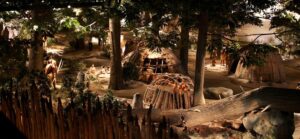
One of the most fascinating elements of this room is its sound. The room's soundscape, to borrow R. Murray Schaffer's term, is a complex, but very subtle blanket of interwoven natural sounds, played in a hushed room over a hidden sound system. It fills the room with the sounds of animals, water, Pequot and other Algonquin languages, and even the sounds of wind in the species-appropriate trees.
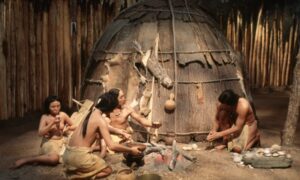
This soundscape was created through a new form of audio technology invented for just such purpose, which enhances the traditional museum viewing experience by enveloping and involving the listener and enabling interaction. The museum's press release announces that:
A state-of-the-art sound system employing 110 speakers and hundreds of sounds -- from seagulls to crickets - was integrated into the village. "The whole environment is encased in acoustic material located behind the wall murals. It makes you feel like you're standing outdoors. It's a complete immersion experience. [the narrator adds] I hope that most people will suspend belief and find themselves in a 450-year-old Pequot village on the shore" (MPMRC-ECTY).
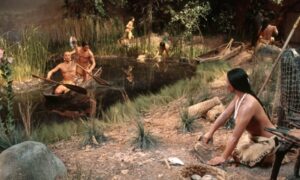 Initial reviews of the museum praised the entire structure, but singled out the recreated village for particular notice; one reviewer writing that the environment's "effect was almost hyperreal" (Bennett 20).
Initial reviews of the museum praised the entire structure, but singled out the recreated village for particular notice; one reviewer writing that the environment's "effect was almost hyperreal" (Bennett 20).The technology required to produce this sonic "hyperreality" was imagined by Bernie Krause and his company Wild Sanctuary. The system was constructed by BBI engineering, a San Francisco-based engineering, contracting and audio services company, and “tuned” on site by the inventor himself. Krause named the invention the Interactive Show System, or ISS, partly from his frustration with the static nature of sound in traditional museum displays.
Basically, exhibit designers [have in the past] used redundant delivery technologies...analog taped sound loops typically related to nothing else in the exhibit. The old models didn't generally correlate with season, time of day/night, or engage the visitor in any way. As a sound designer, I set out to change that paradigm by designing, patenting, and introducing a system that would perform natural history iterations non-redundantly, just as events occur in the natural world and where there is continuity and mutability at the same time (MPMRC-SFPE).
For the Pequot village, Krause and Wild Sanctuary loaded a central computer with hundreds of high-memory audio files, including ambient sounds of wind in trees, waves in the distance, and calls from species-appropriate animals and insects, all selected by Krause and his team and scrupulously recorded in the field.
The recorded sounds were associated with certain speakers or areas of the village, paired with other sounds, times of day and external events, and assigned fader movements. The village's natural soundscape is interlaced with sounds of Pequot life, including voices, use of tools and other human utterances. Krause has written about his process of implementation and the outcome;
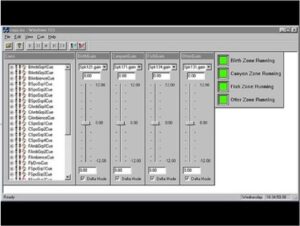
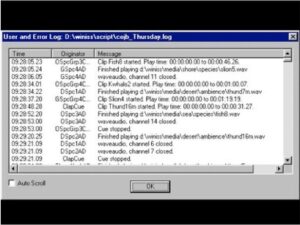

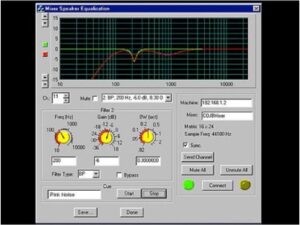
"This is how it works: The software of the ISS is programmed to mix a series of related sound fragments into cohesive and vigorous performances. Randomly selected, these related components are mixed dynamically into expressive themes. And the system provides many years of different performances using only a few hours of basic audio elements without ever repeating the same program." (“Audio Media,” 12)
The greatest innovation of Bernie Krause's soundscape is the system's interactivity with museum visitors. The Interactive Show System incorporates a form of computerized logic that relates specific sounds to certain areas, times, or external events. Motion detectors and decibel meters are linked to the system with corresponding sonic cues, allowing the system to react to the viewer. The resulting playback is thus programmed to reflect the installer’s interpretation of a specific sonic environment, with a predetermined set of reactions to specific human actions, all with an element of randomness.
Wild Sanctuary was involved in the design of the 16th Century village’s sound system before the construction of the museum, enabling the incorporation of the soundscape's design into the very architecture of the building. Krause has mentioned that
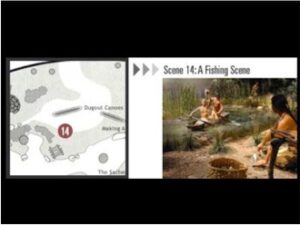 "Early on, we got the folks at the museum to consider the space as a theater and to think of every exhibit component as a piece of a theatrical production. (After all, exhibit design is either good theater or bad. Most of it speaks for itself.) So they took our advice and acoustically controlled the space controlling the reverberation times to less than .5 seconds and dampening the HVAC (heating, ventilation and air conditioning) to under a basic noise floor of an NC38(dB). Once that was achieved, we were able to calibrate the performance of the sounds quite easily to play with great impact and to generally engage the visitor." (2000)
"Early on, we got the folks at the museum to consider the space as a theater and to think of every exhibit component as a piece of a theatrical production. (After all, exhibit design is either good theater or bad. Most of it speaks for itself.) So they took our advice and acoustically controlled the space controlling the reverberation times to less than .5 seconds and dampening the HVAC (heating, ventilation and air conditioning) to under a basic noise floor of an NC38(dB). Once that was achieved, we were able to calibrate the performance of the sounds quite easily to play with great impact and to generally engage the visitor." (2000)The Mashantucket Pequot village soundscape is a result of this architectural, technological and auditory programming process, fine-tuned by Krause and associates under the guidance of representatives from the museum coordination team. It should be mentioned that in the implementation of the soundscape, Wild Sanctuary was in frequent consultation with members of the tribe – especially on aspects involving native voices. As Krause has said,
"The Tribal Liaison team consisted of Terry Bell, Museum Director, and two non-tribal anthropologists, Jack Campisi and Kevin McBride. They determined what content would play when in the human component (cultural history) of the village and directed us what to do." (2000)
Krause recorded and selected most of the natural sounds himself, working with botanists, zoologists and historical ecologists to determine the appropriate audio files to incorporate into the soundscape of the village and drawing from his extensive knowledge of field recording 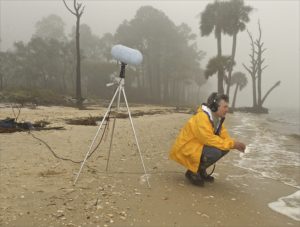 techniques and vast experience with natural soundscapes around the world. Krause himself determined most of the areas of interactivity, and the appropriate responses to human action. He wrote that:
techniques and vast experience with natural soundscapes around the world. Krause himself determined most of the areas of interactivity, and the appropriate responses to human action. He wrote that:
 techniques and vast experience with natural soundscapes around the world. Krause himself determined most of the areas of interactivity, and the appropriate responses to human action. He wrote that:
techniques and vast experience with natural soundscapes around the world. Krause himself determined most of the areas of interactivity, and the appropriate responses to human action. He wrote that:"I...designed most of the interactive soundscape and determined which species would play where and at which times. For instance, you'll note that in one area, where there are bull-frogs, they stop croaking as the visitor approaches and begin, again, as the visitor walks away. When the visitor approaches an exhibit with a dog in the display, the dog will begin a territorial bark, setting off other dogs barking in the village. Geese will fly overhead in one direction, then another. Crows are set to flight in the cornfield by the presence of visitors (if they approach too close)." (2000)
The system's motion detectors allow a viewer to interact with imagined fauna, and the decibel meters allow the volume of the system to be ramped up upon arrival of a particularly vocal busload on a school field trip.
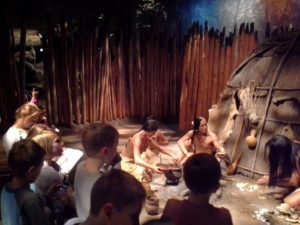
This programmed interactivity between viewer and soundscape challenges the traditional role of the museumgoer. Until recently, museum attendees have been assigned a passive role in a museum’s soundscape, except at designated interactivity points – computer kiosks, hands-on displays, guided learning with interpreters. With unseen triggers incorporated into the system, waiting for a visitor's action, this new technology can be viewed as active and even participatory. Drawing on recent thought, one could argue that this new relationship can be viewed as a form of performance, where the Interactive Show System and its programmers are the performers, the soundscape is the music, and the museum attendees are the participatory members of the audience.
A Secondary Attempt at Theoretic Placement:
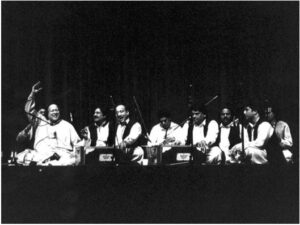
To examine this idea, let us turn to a few recent thoughts on the nature of musical performance. In a wonderful elucidation of the interplay between audience and performer, Regula Burckhardt Qureshi suggested in her article on Qawwali musical performance that most performances are not comprised simply of active performers and passive listeners, but involve a constant interplay between the two through both musical and extramusical material (Qureshi 56).
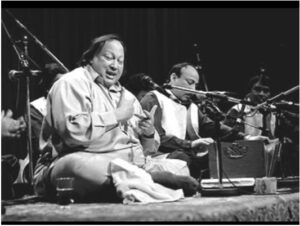
She argues that in a performance, performers and audience interact in a somewhat predetermined manner. The members of the audience choose emotional and/or kinetic responses to the music from a matrix of socially acceptable choices. The musicians select musical reactions to the audience from their own matrix of choices, determined by an aesthetic system and performed through individual and collective agency. In this system, as in many other performance systems, a Qawwali musician would repeat actions that helped to drive his 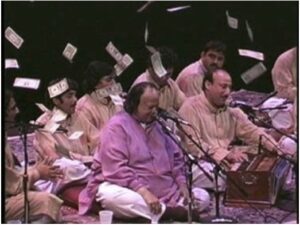 audience to respond enthusiastically (in this case showering Nusrat Fateh Ali Khan and musicians with charitable donations). Thus, a performance, by definition, involves interplay between audience and performers through both musical and extramusical communication.
audience to respond enthusiastically (in this case showering Nusrat Fateh Ali Khan and musicians with charitable donations). Thus, a performance, by definition, involves interplay between audience and performers through both musical and extramusical communication.
 audience to respond enthusiastically (in this case showering Nusrat Fateh Ali Khan and musicians with charitable donations). Thus, a performance, by definition, involves interplay between audience and performers through both musical and extramusical communication.
audience to respond enthusiastically (in this case showering Nusrat Fateh Ali Khan and musicians with charitable donations). Thus, a performance, by definition, involves interplay between audience and performers through both musical and extramusical communication.The soundscape in the Pequot village reflects this definition of a performance. In the sonic environment of the recreated village, the acoustic event is influenced and shaped by the viewers through motion detectors and decibel meters. A matrix of reaction and instigation choices are available to the audience (though they may not know this upon arrival to the museum), and a matrix of sonic choices and aesthetic parameters are programmed into the controlling computer. The relationship of the museum's soundscape with its attendees is thus changed from that of performer/viewer to that of performer/audience. While the individual sounds themselves are recorded, the event itself relies on members of the audience to act as both listeners and involuntary extramusical performers, making the event witnessed by the viewer much more dynamic than a recording. This interactivity helps the “recorded” sounds to transcend into a “live” event.
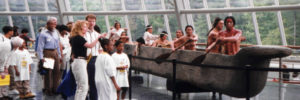
Steve Wurtzler has written that "The categories live and recorded can be usefully conceptualized in relation to their spectator-auditors (consumers). The live is characterized by the spatial co-presence and temporal simultaneity of audience and posited event. The recorded is characterized by the event's spatial absence and temporal anteriority” (89). Wurtzler’s thesis suggests that the presence of audience and the interactivity between viewer and sound producer, regardless of the presence of an actual performer role, makes the soundscape in the Mashantucket village both live and performed. Since the soundscape in the village can be considered a performance, it follows that tools from the field of Ethnomusicology can be applied to investigate its inherent politics and placement.
In a discussion about the performance of culture, Edward Ball has written that "a constructed ethnicity is a[n]...identity produced in the presence of, and for, a spectator. This performative dimension within ethnicity is based on the presumption that culture is not written, as theorists of language might build their metaphor, but staged" (142). We know that museums do, by nature, present some sort of an agenda. As Ivan Karp and Steven D. Lavine state so clearly in Exhibiting Cultures, "Every museum exhibition, whatever its overt subject, inevitably draws on the cultural assumptions and resources of the people who make it" (1).
I would argue that the efforts to document nature's sonic environments in their perfect state and reproduce them in the Pequot village recreation reflect this drive, and thereby perform a constructed ethnicity. Barbara Kirshenblatt-Gimblett has written, "Display is an interface that mediates and thereby transforms what is shown into heritage" (7). In the Pequot museum, the display acts not only as an interface to mediate history, but also as an interface that turns available history into heritage. With the dual authority of scientific and tribal authenticity, the museum acts to construct a fuller Pequot heritage and a fuller sensorial experience of that heritage.
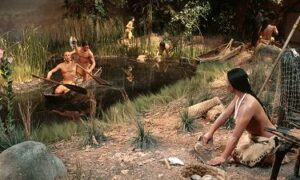
The 16th Century Pequot village's soundscape is a striking example of this constructed heritage. It combines the scientific authority of digital recording technology with ideas of perfection in nature's sonic realms to promote an aural heritage. The reproduced soundscape employs an amazingly complex audio system, and a meticulous attention to detail. The sheer magnitude of the technology employed in the construct, and Krause's own insistence on complex noise-free digital recording technology points to a quest for authenticity in creating the audio environment. Krause's addition of interactivity between soundscape and listener is also a clear presentation of authenticity, as it transcends the typical museum model of audio presentation and tries to recreate some aspects of the sonic interaction inherent in nature.
With the dynamic nature of the audio technology in the Pequot village, the sensorium is unfamiliar – that is, the viewer’s attention is drawn to the dynamic audio in an otherwise familiar static museum environment. As Neil Postman has written, "each technology has an agenda of its own" (163). The ISS audio delivery system is clearly a product of its designer's conceptualizations about the natural world. The audio clips recorded by Krause and programmed into the audio system become objects on display, though with the added dynamism of interactivity and non-sequential placement in time.
Their isolation and removal from a natural soundscape, and their projection into a sterile sonic environment make these sound clips function as perfect postmodernist ethnographic objects of a sonic nature. As Barbara Kirschenbaltt-Gimblett has written, "ethnographic objects are made, not found, despite claims to the contrary. They did not begin their lives as ethnographic objects. They became ethnographic objects through the process of detachment and contextualization" (3). Their placement into a recreation of their natural setting, and their deployment through technology into the sensorium of the museum presents them as postmodernist ethnographic objects - distinct pieces of audio on display in a dynamic soundscape. The sensorium is thus flooded with a slurry of sound, infused with purity and authenticity, and perfectly presented to become part of the museumgoer's experience of Pequot heritage.
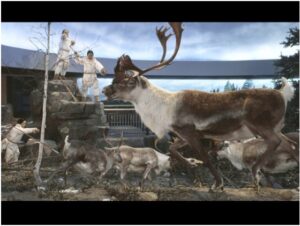
The result of this technological audio system is the presentation of a perfect pre-contact world, where the Mashantucket Pequot nation lived in a stereotypical harmony with nature. The digital recordings of the natural sounds and the noise abatement architecture combine to create a soundscape which, when functioning in isolation, is without external or mechanical noise. In theory, the soundscape recreates a perfect natural environment as envisioned by Krause, Wild Sanctuary and 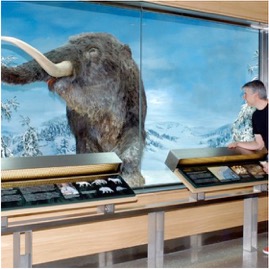 tribal representatives. In practice however, noise is
tribal representatives. In practice however, noise is
 tribal representatives. In practice however, noise is
tribal representatives. In practice however, noise isinjected by the viewer. The soundscape is pristine and "natural" when viewed in silence, but despite the system's designed interactivity and its ability to boost volume levels in reaction to decibel levels, its perfection is in some ways tainted by the sonic and physical presence of viewers. In many ways, this paradox of perfection and ruination is part of a larger narrative throughout the museum as a whole.
Upon close inspection, the linear narrative of the museum is filled with natural sounds until the point of European contact with the Pequots. Even in the section of the museum dedicated to the Ice Age, there are sounds of running water, birds, even recorded creaks and groans of glaciers. A display on a caribou hunt features the sounds of making stone tools, and the mad cacophony of chasing the animal. But, after the viewer progresses chronologically through the museum past initial contact 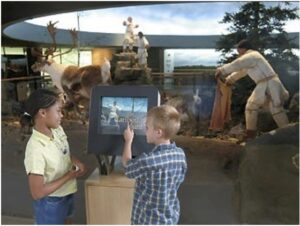 with Europeans, natural sounds are relatively nonexistent.
with Europeans, natural sounds are relatively nonexistent.
 with Europeans, natural sounds are relatively nonexistent.
with Europeans, natural sounds are relatively nonexistent.Even a tribally-produced movie about the fur trade with the French or another on the Pequot war with the early settlers seems to have an absence of natural sounds in their soundtracks. After such an exquisite and expensive attention to sonic detail, the remaining displays of the museum are perhaps purposefully devoid of the presence of nature. It is this presentation of a perfect harmony between nature and Pequot presence that I would argue is one facet of a constructed heritage put forward by the sonic elements of the museum.
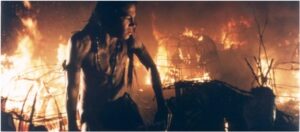 In the chronologic narrative of the museum, the recreated village functions as the turning point for the history of the tribe. It is the largest display in the museum, and features the point at which the tribe had its initial contact with Europeans. It is an interactive spectacle that separates the first half, which presents an archaeological, pre-historical portion of the museum from the second half, which presents the tribe's recent past and modern reality. The recreated village's position in the narrative of the museum is pivotal, and its perceived natural perfection is vital. The role of the
In the chronologic narrative of the museum, the recreated village functions as the turning point for the history of the tribe. It is the largest display in the museum, and features the point at which the tribe had its initial contact with Europeans. It is an interactive spectacle that separates the first half, which presents an archaeological, pre-historical portion of the museum from the second half, which presents the tribe's recent past and modern reality. The recreated village's position in the narrative of the museum is pivotal, and its perceived natural perfection is vital. The role of the 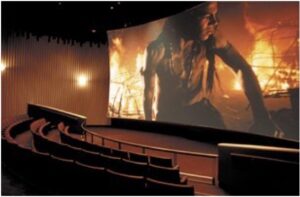 soundscape in this presentation of perfection helps to anchor the museum’s authenticity in the natural setting, and functions as a construction of aural heritage.
soundscape in this presentation of perfection helps to anchor the museum’s authenticity in the natural setting, and functions as a construction of aural heritage.Visitors to the museum progress through a chronologic structure of the museum’s narrative, and directly after the experience of the Pequot village lies the modern era: an arena of contested land rights and modern attempts to reorganize the Pequot nation and claim ancestral land. Throughout this section of the museum, the viewer has a variety of options as they progress through their experiential narrative. Material is presented through interactive kiosks interspersed with displays of ethnographic objects, newspaper articles, and archaeological strata. Two movie theaters present short films, and visitors are able to walk freely throughout the remainder of the museum. As the post-European contact section of the museum presents the personal side of recent Pequot history, natural sounds are at a minimum, replaced instead with voice (in English and a variety of Algonquin languages), spoken narrative and the occasional musical soundtrack.
One of the final rooms in the museum is a gallery of current tribal members. Larger-than-life photographic portraits hang throughout the room and are mounted on the walls, with a system of speakers on the ceiling playing personal narratives, one at a time randomly throughout the hall. With the size and sonic reflectivity of the room coupled with the changing location of the vocal narratives, the effect is an auditory presence of the tribal members, even though the textual content is almost dwarfed by the acoustic of the hall. This room serves to complete the narrative of the museum, and effectively brings the Pequot presence into the attendee’s experience.

The linear narrative of the museum functions to construct a heritage for the Pequot nation, and helps to explain their presence on what is now tribal land. By using a technological system to recreate the natural, the museum is playing to the western stereotypes of the native – purity, authenticity and an unspoiled harmony with nature. One of the only missing aspects of this stereotype (and this was a major aspect of Connecticut/Pequot nation land rights issues) are unbroken traditions and a continual presence on the land. Those arguing against land rights suggested that the post-European contact break in tradition and presence on the land, and diminished blood ties to the tribe disqualified a Pequot ownership of Mashantucket. The museum may function as an answer to these arguments.
The museum presents a perfect recreation of the stereotypical harmony with nature, recapturing a moment in history and presenting it as an experiential heritage. The recreation of the perfect natural setting repackages this history through technology in such a way that it can be experienced dynamically– as live, simultaneous heritage. Sonic aspects of the experience add to this narrative - unsilencing a soundscape and reclaiming space through sonic experience. The museum viewer becomes part of this history as he or she is immersed in the soundscape of the 16thCentury Pequot village. The viewer then witnesses (and is indirectly implicated in) the destruction of this sonic world through the impact of European contact. The relative silence throughout the remaining portions of the museum effectively demonstrate the silencing of the natural world and Pequot identity. The trope of “silenced native voices” is literally undone as the recorded voices of current Pequot tribal members fill the acoustic cavity of the final gallery, and the viewer witnesses the recapturing and recontextualization of sonic space.
It can be seen then, that the soundscape of the recreated village helps to construct a historical ethnicity that situates the pre-contact Pequots in a more perfect time. Through a performative sonic experience, it acts to demonstrate that the harmonic relationship between Pequot and the natural was severed by European contact, and goes on to act as a political statement, possibly to justify current presence on tribal land. It is somewhat ironic to note that one of the most innovative and ingenious applications of technology in modern museum audio presentation has been used to attempt to reproduce a natural soundscape, and that this recreation functions not to transcend the role of the traditional museum, but to gloriously repackage a familiar narrative.
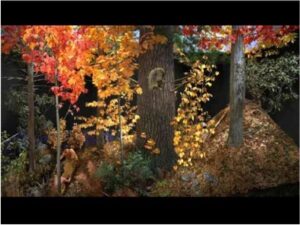
Notes
1. See Roger T. Dean and Freya Bailes’ response to John Locke’s 1690 treatise on sound cognition in relation to a listening body, in which they discuss “imag(in)ed sound”.
2. See Leonard B. Myer’s, Emotion and Meaning in Music. Classical composers had, however, used extramusical sounds such as bird calls and church bells in their compositions, but justified their use as imitative rather than sounds with inherent significance.
3. For further discussions of transparency in audio, see discussions of the immediate and hypermediate in Bolter and Grusin; also the metaphor of windows and mirrors in Bolter and Gromala.
4. One should also note Edwin Schlossberg's interactive display designs at the Ellis Island Immigration Museum, and consult his book, Interactive Excellence.
Works Cited
Albrecht, Robert. Mediating the Muse: A Communications Approach to Music, Media, and Cultural Change. Cresskill, New Jersey: Hampton Press, 2004.
Ball, Edward. “Constructing Ethnicity." Visual Display: Culture Beyond Appearances. Eds. Lynne Cooke and Peter Wallen. Seattle: Bay Press, 1995. 142-154.
Bennett, Paul. "Historic Landscape Discovered amid the Bits and Bytes: Indian Tribe Recovers Things Past." Landscape Architecture. 88.2 (1998): 20-22.
Bolter, J.D., D. Gromala. Windows and Mirrors: Interaction Design, Digital Art and the Myth of Transparency. Cambridge: MIT Press, 2003.
Bolter, J.D., R. Grusin. Remediation: Understanding New Media. Cambridge: MIT Press, 1999.
Dean, Roger T., Freya Bailes, “’Human Understanding’ in Imagining and Organizing Sound: Some Implications of John Locke’s Essay for Ecological, Cognitive and Embodied Approached to Composition.” Organised Sound 12.1 (2007): 89-95.
Feld, Steven. “Pygmy Pop: A Genealogy of Schizophonic Mimesis.” Yearbook for Traditional Music 28.2 (1996): 1-35.
Kahn, Douglas. Noise, Water, Meat: A History of Sound in the Arts. Cambridge: MIT Press, 1999.
Karp, Ivan, Steven D. Levine. "Introduction: Museums and Multiculturalism." Exhibiting Cultures: The Poetics and Politics of Museum Display. Eds. Ivan Karp and Steven D. Lavine. Washington D.C.: Smithsonian Institution Press, 1991. 1-9.
Kirshenblatt-Gimblett, Barbara. Destination Culture: Tourism, Museums, and Heritage. Berkeley: University of California Press, 1998.
Krause, Bernard L. “Re: A Few Pequot Museum Questions.” E-mail to the author. April 11, 2000.
Krause, Bernard L. "Audio Media for Public Spaces." ACM Computers in Entertainment 2.4 (2004): 8-12.
Mashantucket Pequot Museum and Research Center (MPMRC). General Fact Sheet (GFS). Mashantucket, CT: Mashantucket Pequot Museum and Research Center, 1998.
Mashantucket Pequot Museum and Research Center. Special Features of the Permanent Exhibits (SFPE). Mashantucket, CT: Mashantucket Pequot Museum and Research Center, 1998.
Mashantucket Pequot Museum and Research Center. Exhibits Created Through Years of Research and Craftsmanship Bring Pequot Heritage to Life (ECTY). Mashantucket, CT: Mashantucket Pequot Museum and Research Center, 1998.
Myer, Leonard B. Emotion and Meaning in Music. Chicago: University of Chicago Press, 1956.
Ong, W. J. The Presence of the Word: Some Prolegomena for Cultural and Religious History. Minneapolis: University of Minnesota Press, 1967.
Postman, Neil. The End of Education: Redefining the Value of School. New York: Alfred A. Knopf, 1995.
Qureshi, Regula Burckhardt. "Music Sound and Contextual Input: A Performance Model for Musical Analysis." Ethnomusicology 31.1 (1987) 56-86.
Schafer, R. Murray. The Soundscape: Our Sonic Environment and the Tuning of the World. Rochester, Vermont: Destiny Books, 1994.
Schlossberg, Edwin. Interactive Excellence: Defining and Developing New Standards for the Twenty-First Century. New York: Ballantine, 1998.
Wurtzler, Steve. “She Sang Live, but the Microphone was turned Off: The Live, the Recorded, and the Subject of Representation." Sound Theory, Sound Practice. Ed. Rick Altman. New York: Routledge, 1992. 87-103.
